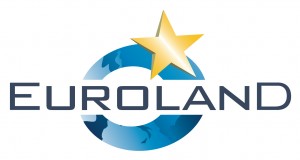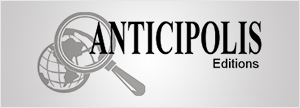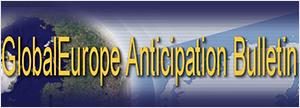In contrast to Putin’s internal policies, Russia’s foreign policy on the European front is, to a greater extent, reactive and is not supported by a coherent strategy. The foreign policy has also been situational; an illustrative example of this could be the anti-war axis between Paris-Berlin-Moscow. Moreover, for the last 4 years the results of the Russia – EU Partnership and Cooperation Agreement (PCA) have been quite modest. Kaliningrad will remain a region in focus following the enlargement of the European Union in May 2004. The recent episode around the secessionist Transdniestr republic and its status has shown how weak and inconsistent the institutional links between Russia and the EU are. But especially in the light of the eastern enlargement, everything seems to boil down to one question: will tactics become modus operandi or are we to become witnesses to Putin’s European strategy somewhere between 2004-2008?
It is particularly the eastern enlargement that necessitates the review of past and present co-operation and calls for a new relationship based on common interests. After the eastern enlargement, Russia’s near abroad: Ukraine, Belarus and Moldova will become direct neighbours of the European Union. At the same time the political future of Ukraine, Belarus and Moldova is accentuated. In addition, Kaliningrad region will become completely encircled by the EU-member states. And apart from geo-political considerations, eastern enlargement may seriously influence Russia’s trade with the EU. It is estimated in Moscow that EU tariffs in new members states will cost Russia around 150 million euros annually.
There are a number of reasons for the absence of Russia’s European strategy or doctrine. Firstly, for the last 4 years President Putin has been largely reforming the domestic landscape. In the political sphere it led to marginalization of political opposition, the domination of the “party of power” and control of the mass media, while in the economic sphere, Kremlin has also assumed a leading role. In reforming Russia’s domestic landscape Vladimir Putin has relied on the Federal Security Agency (FSB) and Prosecution Office. Secondly, a European Union composed of 25 members is a new phenomenon and it will take time before even Brussels can come to terms with it. In light of the eastern enlargement Brussels will have to work out a new strategy towards Russia soon. It should outline the common interests and mechanisms of realization but also accommodate and reconcile the interests and priorities of the old and new member states.
Sometimes, however, Russia-EU relations can provide ground for hope (the EU-Russia Summit in Saint- Petersburg 2003 where the EU and Russia agreed to reinforce co-operation with a view of creating a common European space). But progress occasionally falls victim to geo-political considerations (e.g. recent disagreement over a Russian proposal on Transdniestria which, among other things, envisaged the prolongation of stationing of Russian troops on the territory of Transdniestria for a considerable amount of time. One expert, Sergey Karaganov points out that Russia has not developed enough competent personal in the European matters when dealing with the EU”. Creating new “EU departments” in various Russian ministries looks the least problematic in the light of more serious issues such as finding common interest. Finding common interest is complicated by several factors, two of which seem to constitute a serious problem for the content of EU-Russian relations. Firstly, a seemi! ngly “coincidental” EU-Nato enlargement where the latter, in Russia’s eyes, is unnecessary and apart from spoiling the whole undertaking, creates the “wrong” type of Europe where the “common European house” is accompanied by the institutions from the Cold War era.
Secondly, eastern enlargement brings the European Union close to the vital spheres of Russia’s interests – its near abroad. Regardless of the future content of the EU’s policies towards Ukraine, Belarus and Moldova, Russia is likely to regard it as a penetration into her orbit of influence, thus leaving no choice for the Kremlin but to adopt a more assertive and active policy towards its near abroad.
The present intensification of Russian policies towards her near abroad is apparent. The goal is to remain a dominant political and economic player in the region. The key tool of Russia’s policies towards Ukraine, Belarus and, to a lesser extent, Moldova has been the economy. On the one hand, the Kremlin has been promoting a Common Economic Space (CES) between the above-mentioned and Kazakhstan, and on the other, has made a case for the reverse usage of the Ukrainian built Odessa-Brody oil pipeline and has been threatening to cut gas supplies to Belarus whose President Lukashenka is reluctant to sell Beltransgaz at a lower price.
In Belarus, the Kremlin is particularly eager to invest in the country’s energy transit sector both for economic and political reasons. If Beltransgaz is bought by Russia, Lukashenka will be driven to the wall. Whatever the near future of the personal relations between Lukashenka and Putin, making substantial contributions to the President of Belarus is no longer on the Kremlin’s priority list as controlling the energy veins of the neighbouring country is regarded as a more profitable and less risky investment. As for Ukraine, it seems, that President Kuchma is ready to adopt a Russian variant of the usage of Odessa-Brody pipeline in return for Moscow’s political support. Finally, the positions taken by the EU and Russia in the secessionist republic of Transdniestria cannot last forever and an agreement should be reached. At present, however, the EU and Russia are not only searching for common interests but also places on the changing border map of Europe where their relationships look least problematic, both from the economic and geo-political point of view.
Conclusion
It is too early to speak about a sound and comprehensive Russian strategy towards the enlarged EU. Nevertheless, there are elements that are already visible. At present, Putin’s European policies will be concentrating on three directions:
. Ukraine, Belarus and Moldova will form a top-priority group of countries where Russia may use the whole arsenal of political and economic policies. In this region Russia maintains the possibility to conduct policy aimed either at destabilizing or stabilizing countries’ internal situation. The EU, in this case, may read Russian policies towards near abroad as messages of Russia’s intentions on a wider European scale.
. Russia is likely to make a distinction between the new member states from the Central and Eastern Europe and the current EU members. The Kremlin’s attitudes towards the new member states will be to a great extent determined by the latter’s relationships with Brussels and key European countries. And if something resembling a two-speed Europe ever develops, one of the Kremlin’s responses could be a differentiated European Foreign Policy. Another one of Russia’s instruments, which is essentially European, is the concept of Human Rights, which the Kremlin applies to some of the new EU members EU such as Latvia and Estonia. But durability and potential of this approach is already questioned and Moscow is searching for new approaches. The new member states’ membership in Nato may also postpone Russia’s moves towards a genuine soft security dialogue in the near future.
. Finally relationships with Germany and France will remain a priority issue for Russia. It is with these countries that President Putin was attempting to build an anti-war axis. And it is particularly Germany, and its leadership, that never shown signs of losing interests in developing t relations with Russia. This, however, may change once the European Union expands and Germany will need to co-ordinate its policies towards Russia with new member states, such as Poland.


 LEAP2040 Toutes les informations et archives Europe2040
LEAP2040 Toutes les informations et archives Europe2040


